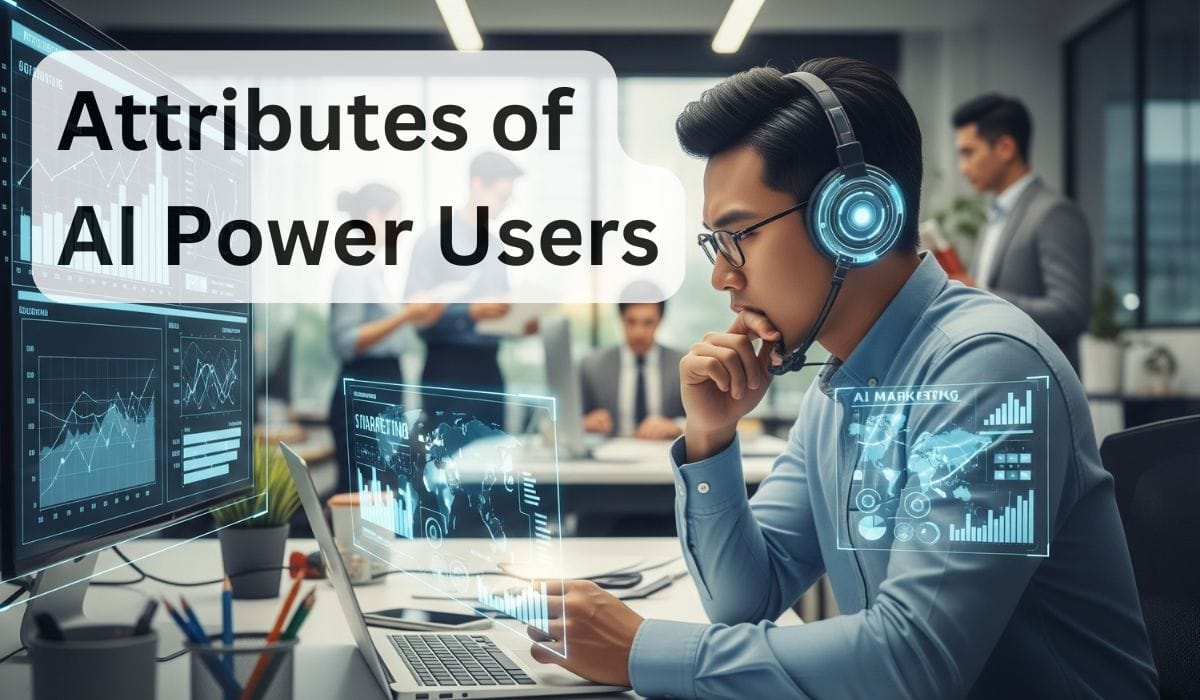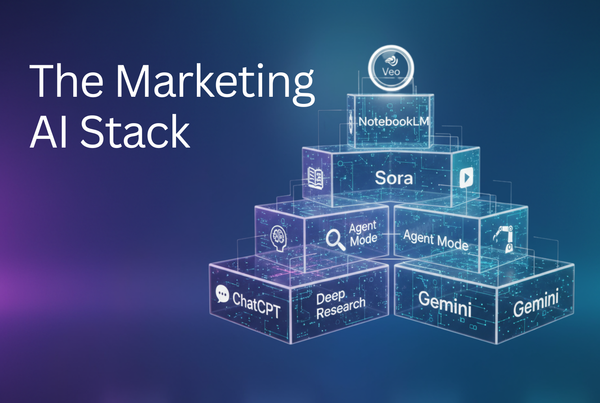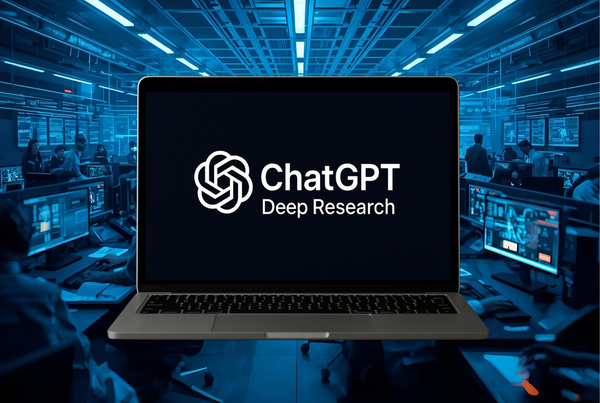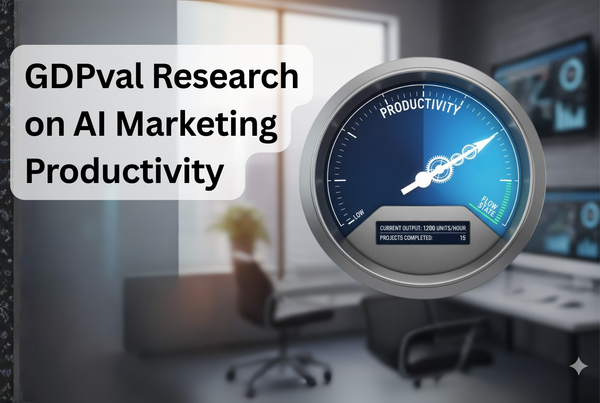You’re Using AI, But Are You Really an AI Marketer?
Here’s how to use AI across the full marketing cycle and become a power user. Inspired by ActiveCampaign’s 2025 AI Marketing Report.

This is the report I’ve been waiting for.
ActiveCampaign's new study "13 Hours Back Each Week" offers one of the most compelling looks at how marketers, especially in small and mid-sized businesses, are embracing AI. To start, it found that AI is giving marketers back almost one-third of their 40-hour work week (13 hours). And the deeper you go with AI tools, the more you gain. AI "power users" are saving an average of 14.8 hours per week.
That’s a lot of reclaimed time. But here’s where it gets interesting: the study found that only 23% of marketers are using AI across the full marketing cycle—ideation, execution, and validation. Most marketers are seeing huge gains in efficiency, but they're not even using AI for it’s biggest advantage: full-cycle integration.
The gap between how AI is used and how it could be used is the difference between dabbling and discipline—between treating AI as a novelty and embedding it as a strategic driver. For SMBs, that gap isn’t just operational. It’s the difference between keeping up and leaping ahead.
The Illusion of AI Mastery
"We’re past the ChatGPT honeymoon. Using AI to write subject lines doesn’t make you an AI-powered marketer any more than Googling symptoms makes you a doctor."
Playing with AI is a critical first step. AI has become the new brainstorm buddy, subject line whisperer, and copy fixer—but don't stop there.
AI is a force multiplier for your entire marketing system. The real competitive edge isn’t just in saving 13 hours a week—it’s in how you increase that and use those hours to build smarter strategies, faster execution, and tighter feedback loops. That’s your moat.
The High-Performance Marketing Triad
The interesting part of the ActiveCampaign report is its Imagine–Activate–Validate framework—a model that defines how high-performing marketers integrate AI across the full marketing lifecycle. Each stage plays a vital role, and the true power of AI is only realized when all three are working together:
- Imagine: This is the strategic and creative front-end. It's where AI helps analyze market trends, customer behavior, and competitive positioning to generate breakthrough ideas. Most marketers start here, using AI for brainstorming, ideation, and content outlines. It’s powerful—but it’s also just the beginning.
- Activate: This is where strategy meets execution. AI powers campaign delivery—automating workflows, personalizing content for segments, optimizing send times, and adapting in real-time. Activate is where scale and speed are unlocked. But without this layer, ideas stay stuck in a Google Doc.
- Validate: The least used—and perhaps most critical—pillar. Validation is about measuring impact: engagement metrics, conversion rates, customer lifetime value, A/B test results. AI can synthesize these insights instantly and suggest improvements. Skipping this step means you're guessing, not growing.
Many are stuck in "Imagine." That’s not a knock—it’s just where the comfort zone is. But the best? They’re building closed-loop marketing engines, cycling through all three pillars continuously. They’re not just creating campaigns. They’re building learning systems that improve with every iteration.
If you're not using AI to imagine, activate, and validate, you're only tapping a third of its value. This triad isn't just a framework—it’s a ladder to AI marketing maturity—and a roadmap for any team ready to get serious about results.
The AI Growth Path
ActiveCampaign’s study introduces a powerful maturity model—from Beginners to Experts. The real differentiator isn’t company size, it’s depth of use. Power Users—those who use AI daily and across the triad—save 57% more time and 36% more in costs than casual users. And they’re 2x more confident in the quality of their work.
For SMBs, AI isn’t just a time-saver—it’s a scale-equalizer. Power Users prove that even the smallest teams can operate with enterprise-level efficiency and insight when they adopt AI across the full marketing lifecycle.
This is just as exciting to me. AI allows me to do things as a marketer that were never possible before—unlocking a level of creative sophistication that once required big-budget agencies or full in-house teams. Sometimes the examples are small, but there are hundreds of them.
That’s not about technology. That’s about mindset.
How to Become an AI Power User
Want to join the top tier of marketers using AI as a true strategic advantage? Here’s a practical checklist inspired by the behaviors of Power Users in the ActiveCampaign report:
- Use AI daily—not occasionally. Make AI a routine part of your workflow, not just an emergency tool.
- Cover all three pillars: Imagine, Activate, Validate. Brainstorm with AI, execute with AI, measure with AI. Don’t stop at ideation.
- Automate with purpose. Set up workflows that save time and elevate quality—email campaigns, ad testing, content personalization.
- Validate everything. Use AI to track results, generate insights, and improve future campaigns. Feedback loops make you better.
- Share how you use AI. Power Users are 83% more likely to be transparent about their AI usage. Openness builds credibility—and visibility. Whether it’s posting about your workflows on LinkedIn, sharing results in your team Slack, turning your prompts into a playbook, or yes, starting a blog like this one, sharing how you use AI helps others learn and helps you lead.
- Stay curious, stay iterative. Power Users aren’t chasing hacks—they’re building systems. Tweak, test, and improve constantly.
AI can be your edge. But only if you go beyond the obvious.
This post is inspired by the insights and data in ActiveCampaign’s Spring 2025 Tentpole AI Marketing Report. Download the full report.





